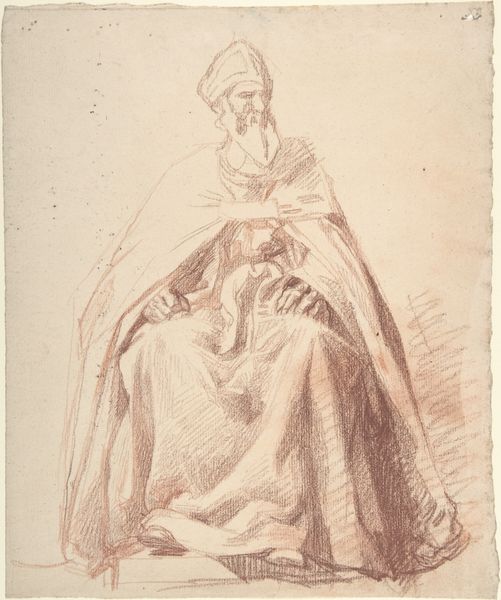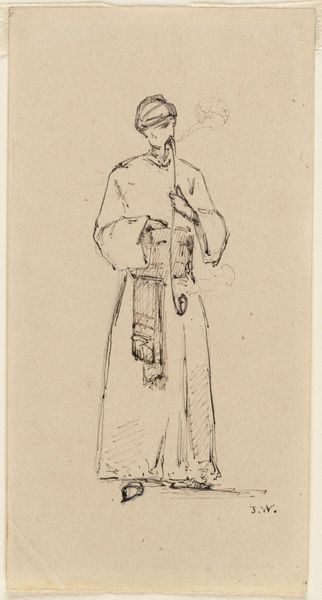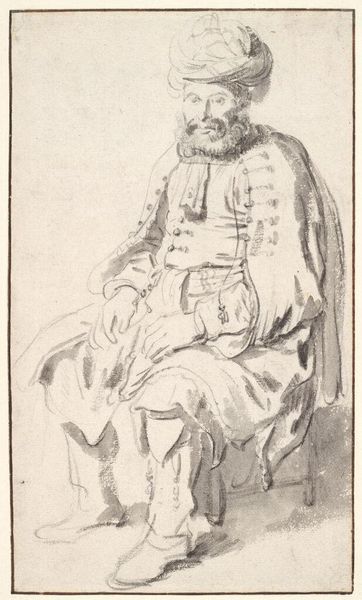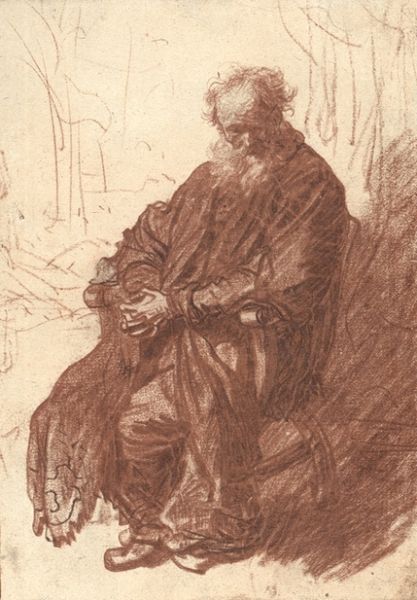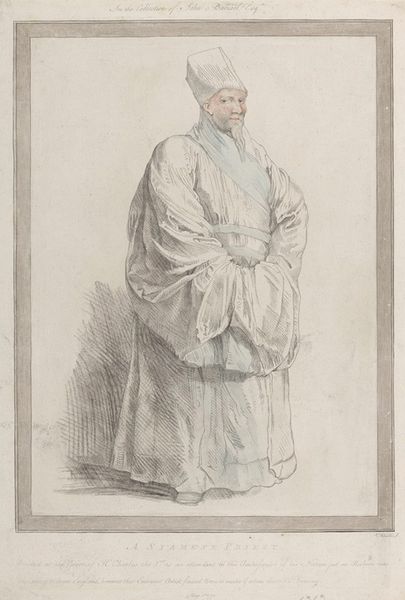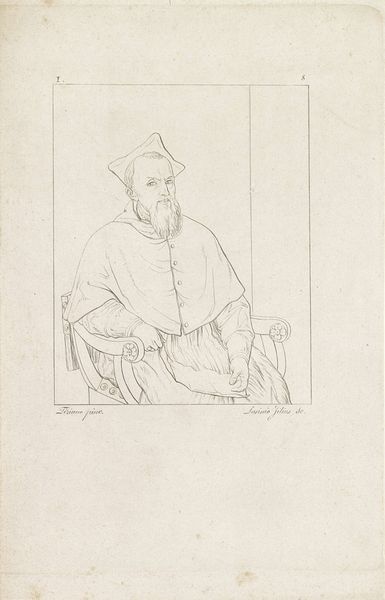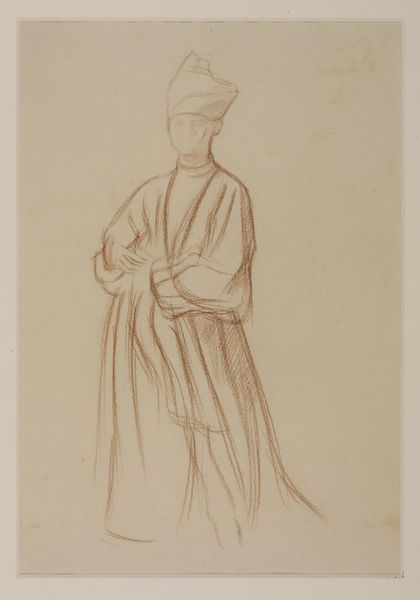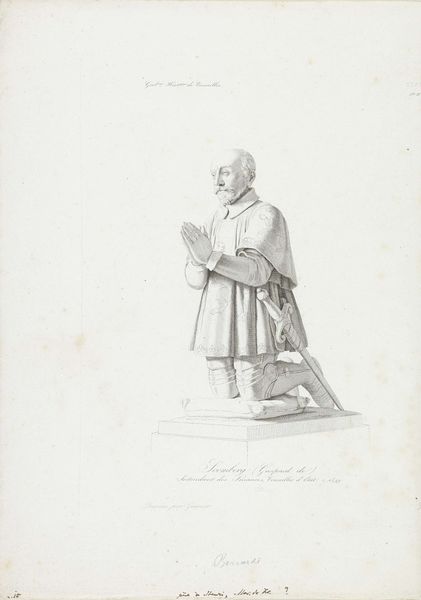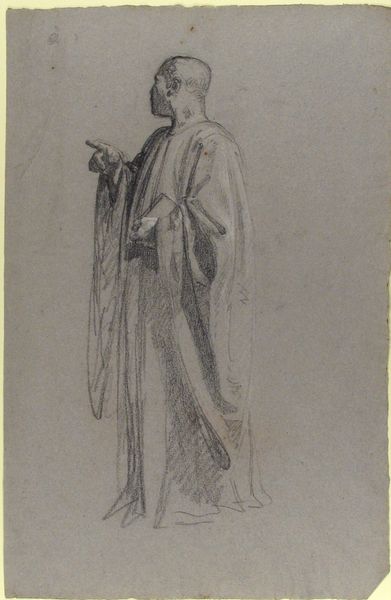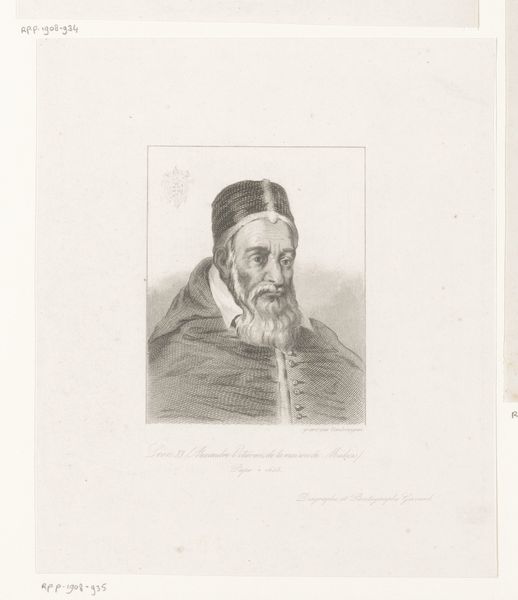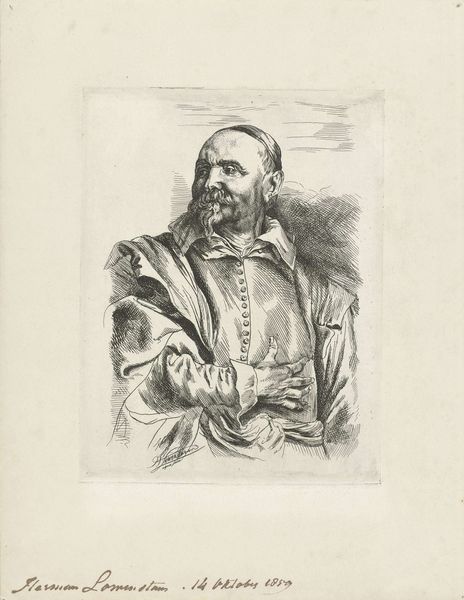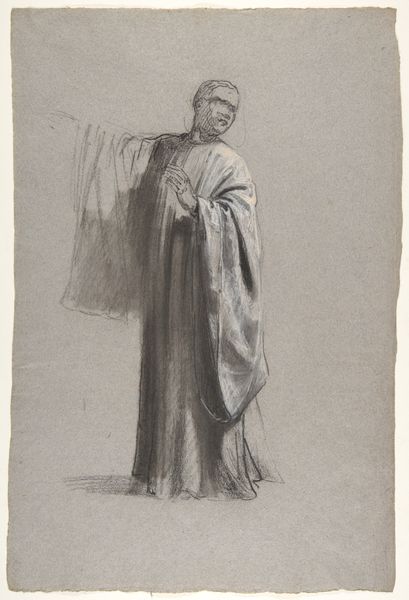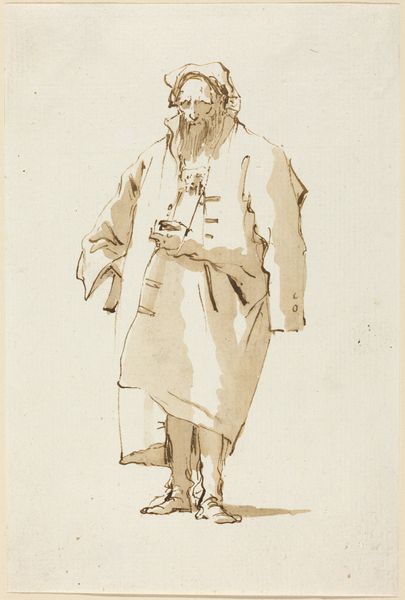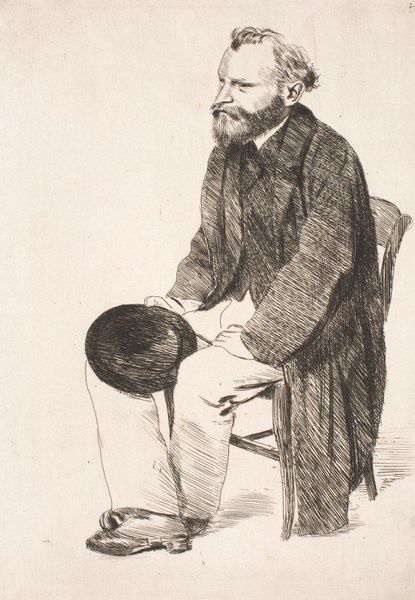
drawing, pencil
#
portrait
#
pencil drawn
#
drawing
#
pencil sketch
#
figuration
#
pencil drawing
#
pencil
#
portrait drawing
#
pencil work
#
academic-art
#
realism
Dimensions: height 263 mm, width 189 mm
Copyright: Rijks Museum: Open Domain
Curator: This is "Zittende monnik met een boek," or "Seated Monk with a Book," by Johan Hendrik Koelman, created sometime between 1830 and 1887. It’s a pencil drawing currently housed in the Rijksmuseum. Editor: The first thing that strikes me is the texture; the artist masterfully used pencil to give the monk's robes weight and a sense of reality. It’s delicate but also substantive. Curator: Indeed. Koelman was working within a period defined by Realism and academic art, but it is interesting to see the portrayal of religious figures, especially considering the shifting societal perspectives on religion during that era. Monastic life, faith itself, was being reconsidered, so this may act as an assertion of or a nostalgic look back toward that world. Editor: And you see that play of light on the fabric, the very fine lines building up a picture of volume, indicating a certain skill that speaks of intense practice in observational drawing. This work then, could function as a kind of demonstration of capability, as well as a statement about this subject’s identity. Curator: Precisely. The choice of depicting a monk, engrossed in reading, reflects a larger discourse on knowledge, spiritual dedication, and perhaps, even a commentary on the perceived divide between religious contemplation and emerging scientific thought. Editor: Right, the act of sketching itself--its relative cost-effectiveness versus painting-- makes it available for studies or private consumption, and perhaps aligns it with a culture of thoughtful consideration reflected by the Monk. Curator: Thinking about it that way draws our attention to the relationship of artist, sitter and consumer. What kind of a message were they hoping to send? Editor: Overall, the artwork, as a material object made of paper and graphite, allows a deep engagement with the complex issues circulating around shifts in religious and artistic thought during the mid-19th century. Curator: I find myself now wondering more about the intersection between individual spirituality and social change. Editor: And I appreciate how Koelman’s chosen material reflects and reinforces the social significance of its content.
Comments
No comments
Be the first to comment and join the conversation on the ultimate creative platform.
